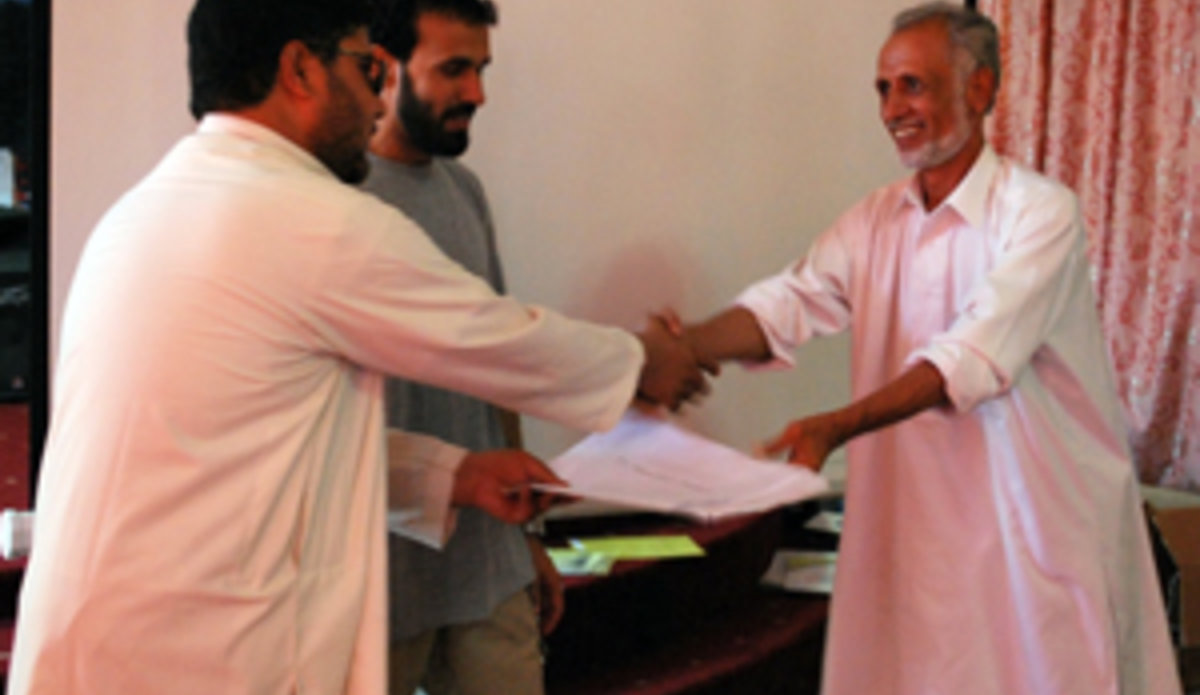Civil society learns to deal with the media
4 August 2009 - During his twenty four years of service as a schoolteacher, followed by a few years of experience as an NGO worker, 54-year-old Muhamad Noorzai didn’t know “anything about media”.
The only way he kept himself in touch with the media was by reading newspapers, listening to radio and watching television.
Now, as a senior staff member of the Afghanistan Centre for Training and Development, a Jalalabad-based NGO, he has to deal a lot with journalists.
And he’s just benefited from a short elections-related training programme for civil society organizations conducted by the NGO Nai, which supports media in Afghanistan.
“Even I didn’t know what’s media, how we should reach and contact them,” said Mr Noorzai after the training. “Now, I know how closely the media and the civil society are connected.”
Support for the training was provided by the Internews, an international media development NGO, and the election project of the United Nations Development Programme (UNDP/ELECT).
Mr Noorzai was among 20 participants from different civil society organizations, including the media that participated in the two-day training.
Besides learning skills to deal with the media, they also had an opportunity to actually interact with active journalists.
“Eight journalists had been invited on the first day of the training to check the press releases prepared by the trainees from civil society organizations,” said Ezatullah Akbari, a senior trainer with Nai.
“They (journalists) also explained what they expected of the civil society organizations and vice versa.”
Mr Akbari said the main topics covered during the training were: how to prepare press releases, techniques for participating in roundtables, how to contact media, how to hold interviews and how to conduct media analysis.
He thought that the training in Jalalabad was better than similar trainings conducted in other regions, because “there was more interaction between journalists and civil society representatives”.
Nai has trained about 170 journalists and a similar number of civil society representatives from the media, human rights and women rights, among others, across the 12 provinces of the country in June and July, to prepare themselves for the elections.
“Now, I have learned to write press releases,” said Mr Akbari. “The training has stimulated me to practice what I have learned here by getting in touch with the media.”
Eighteen-year-old Mursal Neda, a 10th grader at school who is also employed by Nargis Radio as a newscaster, was also a participant at the training in Jalalabad.
Ms Neda is happy that the training offered her the opportunity to know women activists of her region, so that they can be invited for live interviews in the radio.
“Women are generally reluctant to come for media interviews,” said Ms Neda, who has received six months of journalism training. “They (women) have agreed to be interviewed for the radio. So, we will get more women in the future.”
Run by the Shaiq Network, Nargis is a radio station by women, for women, based in Jalalabad city.
The training for civil society representatives was preceded by in-depth training for journalists of the region that saw participation from all four provinces of the eastern region – Nangarhar, Laghman, Kunar and Nuristan.
Dr Niamatullah Hamdard, Eastern Regional Coordinator of a loose network of civil society and human rights organizations, who also participated in the training said: “The training encourages us to draw special attention of the election through relation with the people and the media”.
By Tilak Pokharel, UNAMA
Website: Internews
 UN
UN







